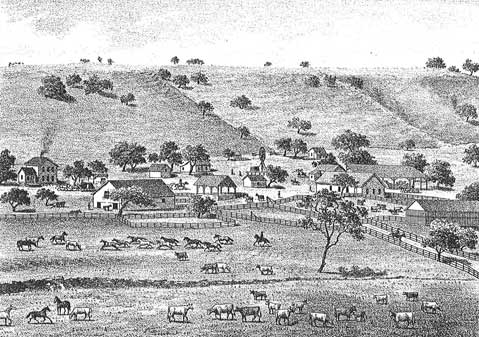Buellton
When Was Buellton Founded?

Buellton became the seventh incorporated city in the county in 1992, but its history goes back quite a bit further. The town was named after Rufus Thompson Buell, born into a Vermont farm family. He attended Oberlin College in Ohio, taught school for a time in Kentucky, and then in 1853 boarded a steamship for California.
Buell enjoyed some success as a gold prospector, but in 1856, he decided to return to farming. After spending a short time in Sonoma County, he purchased 13 cows and began a dairy in Marin County. In 1865 he relocated to Salinas; by now his herd had grown to 800 animals. He also became editor of a local newspaper.
He returned to Vermont in 1867 to marry, then came back to California, where he and his brother purchased interest in the Rancho San Carlos de Jonata at the western end of the Santa Ynez Valley. In 1872, Buell purchased the balance of the ranch from his brother and the other owners.
In the next two years, Buell poured some $100,000 into the ranch. He increased his dairy herd to 1,200 cows, his cattle herd to 3,500 animals, his sheep flocks to 1,700, and kept more than 700 hogs. He planted barley and wheat, fruit orchards, and vineyards. He employed more than 50 men, opened a school for their children in 1889, and established a post office on the ranch in 1883. There was also a general store. He built a slaughterhouse and a cheese factory and put up more than 40 miles of fencing.
A serious drought in the mid 1870s threatened Buell with ruin. To save his herds from starvation he cut down hundreds of oaks so the animals could feed on the tender shoots and mosses of the trees. Financial recovery came slowly, and Buell was forced to sell 12,000 acres in 1890 to get back on his feet again. A portion of this acreage was later purchased by the Danish-American Corporation to found Solvang. Buell died in 1905, and the ranch was divided among his sons.
In 1916, construction began on the rerouting of the state highway, which led to the birth of Buellton. In 1920, the area’s postmaster, William Budd, submitted the name “Buell” to the federal government for the post office. As there already was an Oregon town named Buell, Budd next submitted “Buellton,” which was accepted in December 1920. Located at the crossroads of highways 101 and 246, the small community came to depend on the ever-growing stream of automobile traffic for economic viability.
The town’s best-known landmark got its start in 1924, when Anton and Juliette Andersen opened Andersen’s Electric Café, so named because the restaurant boasted an electric stove. Although pea soup was a popular menu item early on, the restaurant underwent a number of name changes before being christened Pea Soup Andersen’s in 1947.
With another rerouting of the highway in 1964, 101 no longer went through the middle of town. Still, Buellton continued to grow. Today it is a thriving community of almost 5,000 people.



